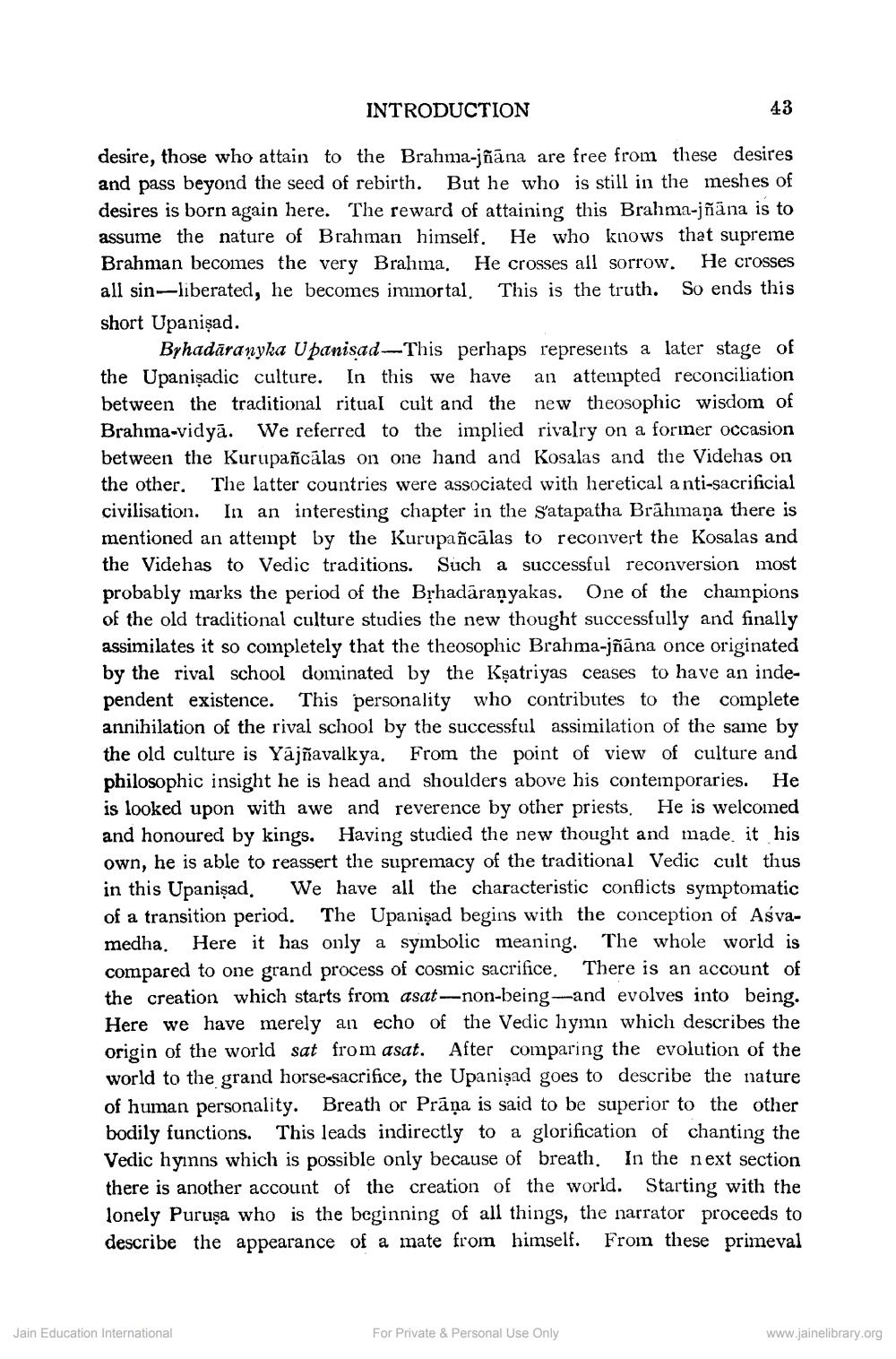________________
INTRODUCTION
43
desire, those who attain to the Brahma-jñāna are free from these desires and pass beyond the seed of rebirth. But he who is still in the meshes of desires is born again here. The reward of attaining this Brahma-jñāna is to assume the nature of Brahman himself. He who knows that supreme Brahman becomes the very Brahma. He crosses all sorrow. He crosses all sin--liberated, he becomes immortal. This is the truth. So ends this short Upanişad.
Byhadāranyka Upanisad-This perhaps represents a later stage of the Upanişadic culture. In this we have an attempted reconciliation between the traditional ritual cult and the new theosophic wisdom of Brahma-vidyā. We referred to the implied rivalry on a former occasion between the Kurupañcālas on one hand and Kosalas and the Videhas on the other. The latter countries were associated with heretical anti-sacrificial civilisation. In an interesting chapter in the Satapatha Brāhmaṇa there is mentioned an attempt by the Kurupañcālas to reconvert the Kosalas and the Videhas to Vedic traditions. Such a successful reconversion most probably marks the period of the Brhadāraṇyakas. One of the champions of the old traditional culture studies the new thought successfully and finally assimilates it so completely that the theosophic Brahma-jñāna once originated by the rival school dominated by the Ksatriyas ceases to have an independent existence. This personality who contributes to the complete annihilation of the rival school by the successful assimilation of the same by the old culture is Yajñavalkya. From the point of view of culture and philosophic insight he is head and shoulders above his contemporaries. He is looked upon with awe and reverence by other priests. He is welcomed and honoured by kings. Having studied the new thought and made it his own, he is able to reassert the supremacy of the traditional Vedic cult thus in this Upanisad. We have all the characteristic conflicts symptomatic of a transition period. The Upanişad begins with the conception of Asvamedha. Here it has only a symbolic meaning. The whole world is compared to one grand process of cosmic sacrifice. There is an account of the creation which starts from asat--non-being--and evolves into being. Here we have merely an echo of the Vedic hymn which describes the origin of the world sat from asat. After comparing the evolution of the world to the grand horse-sacrifice, the Upanişad goes to describe the nature of human personality. Breath or Prāņa is said to be superior to the other bodily functions. This leads indirectly to a glorification of chanting the Vedic hyinns which is possible only because of breath. In the next section there is another account of the creation of the world. Starting with the lonely Puruşa who is the beginning of all things, the narrator proceeds to describe the appearance of a mate from himself. From these primeval
Jain Education International
For Private & Personal Use Only
www.jainelibrary.org




